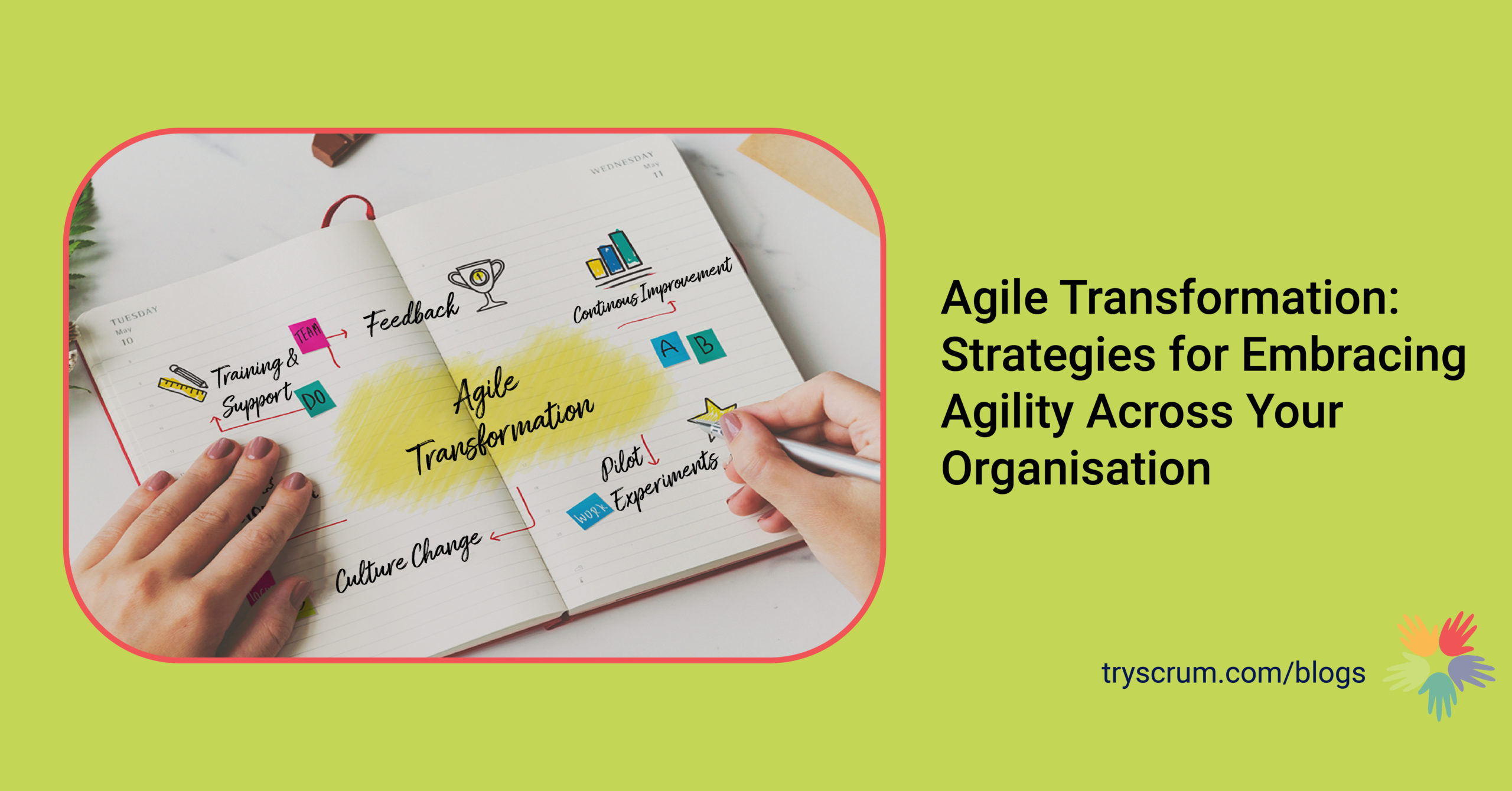
Agile Transformation: Strategies for Embracing Agility Across Your Organization
In today’s rapidly changing business landscape, companies constantly strive to improve processes, boost efficiency, and deliver customer value. An agile method is a popular approach to product management that has been proven to deliver results for businesses of all sizes. This blog post will explore strategies for enabling an Agile mindset across your organisation.
Why Agile Transformation Matters
Agile transformation involves embracing Agile ways of working across an organisation, requiring a significant shift in mindset, culture, processes, and structures. A Cornell University study found that Agile methods helped teams improve efficiency and effectiveness. Companies that have implemented Agile report:
- 64% improved time to market
- 62% improved productivity
- 58% improved team morale
- 53% improved product quality
These benefits make Agile transformation a worthwhile investment for companies that seek to remain competitive in today’s marketplace.
Strategy #1: Start with Pilot Experiments
One effective way to implement Agile across your organisation is to start with pilot projects. Choose a small, cross-functional team to pilot Agile working methods like Scrum and provide them with the training, resources, and support they need to succeed. This will allow you to test the waters and identify potential issues before rolling out new ways of working more widely.
Research from top business schools supports this strategy. According to a Harvard Business Review article, companies using Agile methods typically begin with small, focused teams before scaling to larger projects. Barclays, for example, piloted the Agile approach in its card services department and achieved a 50% reduction in time-to-market and a 25% reduction in defects. Likewise, when I was working with HID, an identity solution provider, we started piloting Scrum, a popular Agile Framework, in one division before we scaled and rolled it up at a broader level.
Strategy #2: Focus on Culture Change
Embracing Agile ways of working requires a significant cultural shift. To succeed, you must create a culture of collaboration, transparency, and continuous improvement. This requires strong leadership, effective communication, and a commitment to change.
Cornell University’s Center for Advanced Human Resource Studies publication confirms that culture change is crucial for Agile transformation. As a result, ING has embraced Agile across its entire organisation, significantly improving customer satisfaction, employee engagement, and time-to-market.
Strategy #3: Provide Training and Support
Practical training and support are essential for successful Agile transformation. This includes providing training on Agile values and principles and support for individuals and teams as they navigate the transition. Various Studies from Business schools in the united states show that training and support are critical for Agile transformation. For example, GE Healthcare created a comprehensive training program for its employees, which included classroom training and online resources. As a result, it could implement Agile ways of working across its global operations. In addition, when I worked with RBS as an Agile Coach, we designed a curriculum explicitly for people involved in transformation initiatives.
Strategy #4: Foster Continuous Improvement
Agile transformation is not a one-time event but a continuous process of improvement. Encourage your team to adopt a mindset of constant learning and improvement by providing regular feedback, conducting retrospectives, and identifying areas for improvement. Celebrate small wins and use them as an opportunity to reinforce the Agile values and principles.
As someone who has worked on Agile transformation, I introduced a community of practices to foster collaboration across different divisions. In addition, I ensured that it fostered continuous improvement and a learning culture. You can achieve long-term success with Agile transformation by continuously striving to improve.
Conclusion
Agile transformation is a complex process requiring a significant shift in mindset, culture, and processes. The benefits of Agile transformation include improved time to market, productivity, team morale, and product quality. To successfully implement Agile across your organisation, consider piloting projects, focusing on culture change, and providing training and support.
About Author
Venkatesh Rajamani is a Founder of tryScrum.com, a Management Consulting firm. He is an award-winning Coach listed as one of the Top 100 Most Influential Coaching Leaders by the World HRD in 2023. He is also a Professional Scrum Trainer® with Scrum.org and a Certified Enterprise Coach® with Scrum Alliance.




